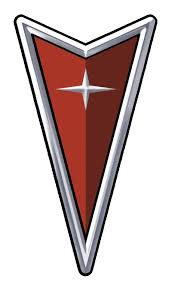G6 V6-3.9L VIN 1 (2006)

Cruise Control: Description and Operation
CRUISE CONTROL DESCRIPTION AND OPERATION
Cruise control is a speed control system that maintains a desired vehicle speed under normal driving conditions at speeds above 40 km/h (25 mph).
Steep grades may cause variations in the selected vehicle speeds.
The following are the main components of the Cruise Control System:
-
The accelerator pedal
-
The brake pedal position (BPP) sensor
-
The body control module (BCM)
-
The cruise control on/off switch
-
The cruise control cancel switch
-
The engine control module (ECM)
-
The + RES switch The + RES switch is the equivalent to an accel/resume switch.
-
The - SET switch The - SET switch is the equivalent to a set/coast switch.
-
The TAC motor
-
The vehicle speed sensor (VSS)
Cruise Control Engaged
The Cruise Control System will engage and adjust vehicle speeds, based on the activation of the following cruise control switches:
-
On/off
-
+ RES
-
- SET
The body control module (BCM) monitors the signal circuit of the cruise control switches. The BCM relays the cruise control switch status to the
engine control module (ECM) via the GMLAN serial data circuit. The ECM uses the status of the cruise control switch to determine when to capture
and maintain the vehicle speed. The ECM monitors the vehicle speed signal circuit in order to determine the desired vehicle speed. The ECM uses the
throttle actuator control (TAC) motor in order to maintain the vehicle speed. For further information on the TAC System, refer to CELL LINK for the
2.4L engine or to Throttle Actuator Control (TAC) System Description for the 3.9L engine.
Ignition voltage is supplied to the cruise control switch from the 2-ampere RUN/CRANK fuse located in the integrated BCM fuse block. The cruise
control function switches are arranged in a resistive ladder design, with each cruise control function switch having a different resistance value. The
BCM detects a specific voltage value that is associated with the cruise control function switch being activated. When the normally open cruise control
on/off switch is turned ON, the switch closes and the amber cruise control switch indicator illuminates. The BCM detects a predetermined voltage
signal on the cruise control set/coast and resume/accel switch signal circuit. The BCM sends a GMLAN serial data message to the ECM indicating
that the on/off switch is active. Similarly, when the normally open + RES switch or the normally open - SET switch are pressed, the switch closes and
the BCM detects the predetermined voltage signal on the cruise control set/coast and resume/accel switch signal circuit. The BCM sends a GMLAN
serial data message to the ECM indicating that the + RES switch or the - SET switch is active. To engage the Cruise Control System, ensure that the
vehicle speed is above 40.2 km/h (25 mph), turn the cruise On/Off switch ON and momentarily press the - SET switch. The ECM will engage the
Cruise Control System and record the vehicle speed. The ECM sends a GMLAN serial data message to the instrument panel cluster (IPC) in order to
illuminate the Cruise indicator in the IPC. The - SET switch and the + RES switch will remain inactive when the BCM has not received the
predetermined voltage signal from the on/off switch. Pressing the accelerator pedal, while the Cruise Control System is engaged, will allow the driver
to override the Cruise Control System in order to accelerate the vehicle beyond the current set vehicle speed. When the accelerator pedal is released,
the vehicle will decelerate and resume the current set vehicle speed. The driver can also override the current set vehicle speed via the - SET switch and
the + RES switch. When the Cruise Control System is engaged, pressing and holding the - SET switch will allow the vehicle to decelerate from the
current set vehicle speed without deactivating the Cruise Control System. When the - SET switch is released, the ECM will record the vehicle speed
and maintain the vehicle speed as the new set vehicle speed. When the Cruise Control System is engaged, momentarily pressing the - SET switch will
allow the vehicle to decelerate at 1.6 km/h (1 mph) increments for each time that the - SET is momentarily pressed, with a minimum vehicle speed of
37 km/h (23 mph). Pressing and holding the + RES switch, when the Cruise Control System is engaged, will allow the vehicle to accelerate to a
greater vehicle speed than the current set vehicle speed. When the + RES switch is released, the ECM will record the vehicle speed and maintain the
vehicle speed as the new set vehicle speed. When the Cruise Control System is engaged, momentarily pressing the + RES switch will allow the vehicle
to accelerate at 1.6 km/h (1 mph) increments for each time that the + RES switch is momentarily pressed, with the maximum acceleration total of 16
km/h (10 mph) over the current set vehicle speed. Momentarily pressing the + RES switch will recall the previous set vehicle speed that is recorded in
the ECM after the Cruise Control System has been disengaged by pressing the brake pedal or by activating the CANCEL switch.
Cruise Control Disengaged
The engine control module (ECM) disengages the cruise control operation based on the signals from the following switches:
-
The brake pedal position (BPP) sensor
-
The clutch pedal position (CPP) sensor, if equipped with a 3.9L (L29) engine and a manual transmission.
-
The cruise control cancel switch
-
The cruise control on/off switch
The body control module (BCM) monitors the signal circuit of the cruise control cancel switch. When the cancel switch is activated, the BCM detects
a high signal voltage on the cruise control cancel switch signal circuit. The BCM sends a GMLAN serial data message to the ECM in order to
